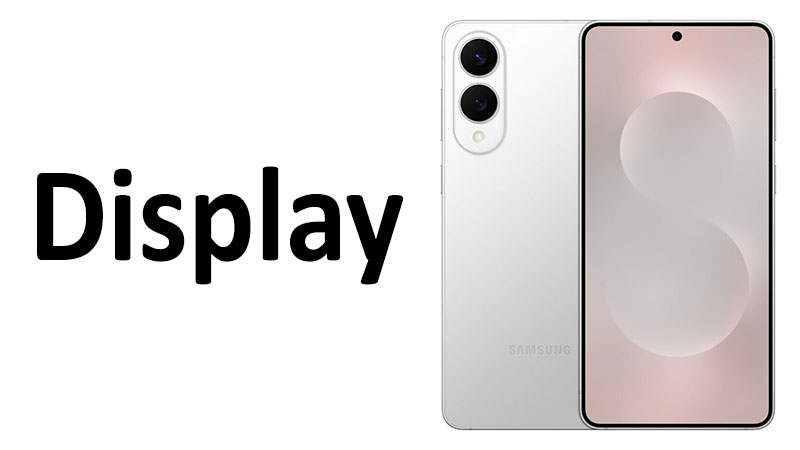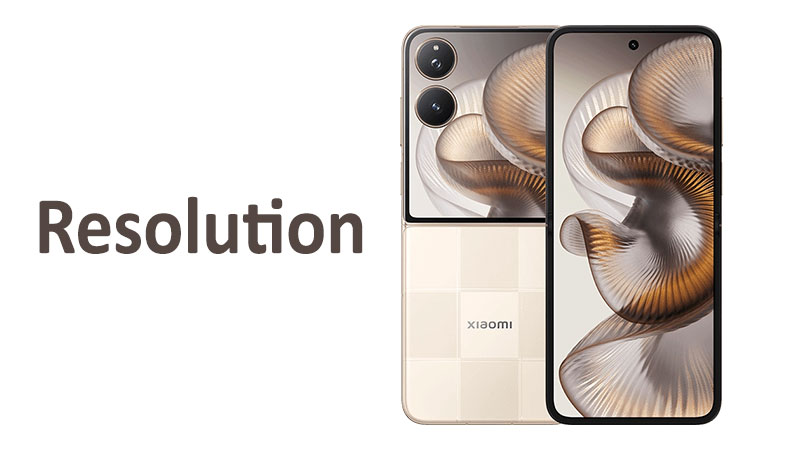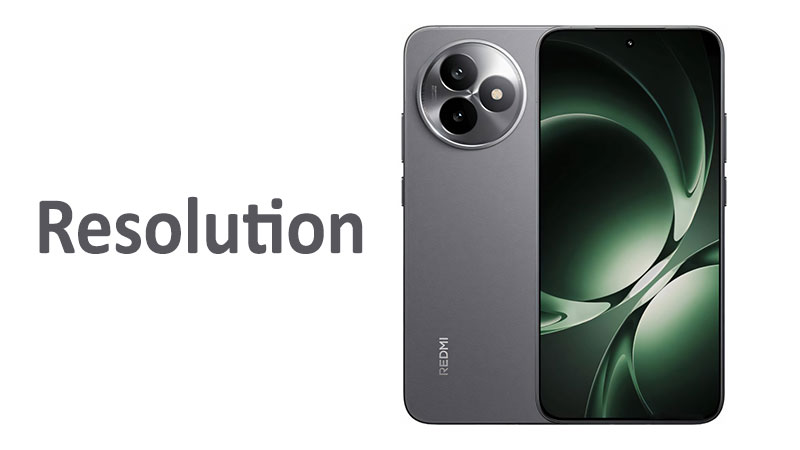The Samsung Galaxy S25 Edge display represents a pinnacle of mobile screen technology. It is the primary window through which users interact with their device. Therefore, its quality, specifications, and features are paramount to the overall smartphone experience. Samsung has consistently led the industry in display innovation. The S25 Edge continues this tradition by integrating the latest advancements in AMOLED and adaptive refresh rate technology. This comprehensive review will dissect the S25 Edge screen. We will examine its core specifications, including resolution, size, and the critical LTPO AMOLED 2X panel type. We will also provide a detailed buyer’s guide. This helps you understand why this display sets a new benchmark for flagship clarity and smoothness.
Technical Specifications of the S25 Edge Display
Understanding the raw specifications of the Samsung Galaxy S25 Edge display is the first step. These numbers dictate the visual quality, responsiveness, and durability of the screen. Samsung has packed the S25 Edge with advanced technology. This ensures a top-tier viewing experience across all media.
Panel Type: LTPO AMOLED 2X
The S25 Edge uses a cutting-edge LTPO AMOLED 2X panel. This is a significant technological achievement. AMOLED stands for Active-Matrix Organic Light-Emitting Diode. It means each pixel produces its own light. This results in perfect blacks and infinite contrast ratios.
The “2X” designation refers to Samsung’s proprietary tuning and brightness optimization. This enhances color volume and efficiency. Crucially, LTPO stands for Low-Temperature Polycrystalline Oxide. This technology allows the display to dynamically change its refresh rate. This change can occur without requiring specialized components. It is key to improving battery life and viewing quality.
Size and Screen-to-Body Ratio
The S25 Edge features a generous 6.7-inch display. This size provides an expansive canvas for media consumption and multitasking. The display area measures 110.2 cm2. This large screen size is ideal for gaming and watching movies.
Furthermore, the screen-to-body ratio is approximately 92.1%. This high ratio means the bezels around the screen are extremely thin. The phone feels modern and immersive. The high screen-to-body ratio enhances the feeling that the content extends right to the edge of the device.
Resolution and Pixel Density
The display boasts an impressive resolution of 1440 x 3120 pixels. This is often referred to as Quad HD+ or 2K resolution. This high resolution, combined with the 6.7-inch size, results in a sharp pixel density of approximately 513 ppi (pixels per inch).
This high pixel density ensures exceptional sharpness. Individual pixels are virtually invisible to the naked eye. Text appears crisp and clear. Images show incredible detail. This resolution capability is vital for viewing high-quality photos and videos captured by the phone’s advanced camera system.
Performance and Motion Dynamics: Refresh Rate and PWM
The visual quality of a display is not just about resolution. It is also about how smoothly it handles motion. The S25 Edge display incorporates industry-leading motion technology. This includes an adaptive refresh rate and advanced dimming.
Adaptive Refresh Rate: 120Hz LTPO
The screen features a maximum refresh rate of 120Hz. This means the screen updates 120 times every second. A higher refresh rate translates directly into smoother motion. This is noticeable when scrolling through social media or playing fast-paced games.
The LTPO technology is what makes the 120Hz rate adaptive. The display can scale its refresh rate down significantly, sometimes to as low as 1Hz. It does this when static images are displayed. This dynamic adjustment is crucial for battery conservation. It provides maximum smoothness when needed, and maximum efficiency when it is not. This adaptive 120Hz refresh rate is a major selling point for the S25 Edge.
Specialized Comparison: Adaptive 120Hz vs. Fixed 60Hz
The difference between the S25 Edge’s adaptive 120Hz display and a standard fixed 60Hz screen is profound. A 60Hz screen updates half as often. This creates a noticeable motion blur when scrolling or gaming.
The 120Hz refresh rate doubles the available frames per second. This results in buttery smooth animations. Furthermore, the LTPO system is superior to non-LTPO 120Hz screens. Non-LTPO screens are less efficient. They drain the battery faster when running at high refresh rates. The S25 Edge provides the smoothness without the same battery penalty.
Advanced Dimming: 480Hz PWM
Pulse Width Modulation (PWM) is the method OLED screens use to control brightness. They rapidly cycle the display on and off. Low PWM frequencies can cause screen flickering. This flicker can lead to eye strain, especially for sensitive users at low brightness levels.
The S25 Edge features a high PWM frequency of 480Hz. This high frequency is much safer and more comfortable for long-term use. A higher number means the display cycles much faster than the human eye can perceive. This significantly reduces flicker-related eye fatigue. This 480Hz PWM dimming is an essential health and comfort feature.
Display Quality and Content Enhancement
The raw specs combine to deliver a display that excels in color accuracy, contrast, and brightness. These qualities define the content consumption experience on the S25 Edge.
HDR10+ Support and Color Volume
The display fully supports HDR10+ content. HDR stands for High Dynamic Range. It allows the display to show a much wider range of colors and brightness levels. This capability enhances the viewing of supported streaming content.
HDR10+ is an open standard. It uses dynamic metadata to adjust brightness and color frame-by-frame. This contrasts with static HDR standards. The result is deeper shadows and brighter highlights. The images are more lifelike and engaging. The S25 Edge’s AMOLED panel is uniquely suited for HDR. It achieves perfect black levels for maximum contrast.
Specialized Comparison: HDR10+ vs. Standard Dynamic Range (SDR)
Viewing SDR content on the S25 Edge is excellent. However, viewing HDR10+ content is transformational. SDR images lack the punch and depth of HDR.
In an SDR image, the brightest areas are capped. The darkest areas lose detail. With HDR10+, the display reveals subtle details in both extremes. For example, sunlight reflecting off water will look genuinely brilliant. Shadows under a tree will retain texture and nuance. The S25 Edge display brings movies and shows to life with its exceptional HDR capabilities.
Edge Design and Immersive Viewing
The “Edge” design refers to the display curving slightly over the side rails of the phone. This design is a hallmark of Samsung’s flagship line.
The curved screen contributes to the high screen-to-body ratio. It makes swiping gestures feel intuitive and fluid. The curved display provides an enhanced sense of depth and immersion. Content appears to flow over the sides of the device. This physical design element is a key part of the S25 Edge visual identity.
Durability and Protection Features
A cutting-edge display requires robust protection. Samsung addresses this need with an extremely durable front glass. This protection ensures the longevity of the S25 Edge screen.
Corning Gorilla Glass Ceramic 2
The S25 Edge uses Corning Gorilla Glass Ceramic 2 for its protection layer. This is an advanced composite material. It offers significantly improved drop and scratch resistance compared to standard glass.
This specialized glass incorporates ceramic nanocrystals within the glass matrix. This process provides the toughness of ceramic while retaining the transparency of glass. It is a highly effective solution against daily wear and accidental drops. This protection ensures the vibrant display remains pristine for longer.
Mohs Hardness Level 5
The screen protection achieves a Mohs hardness level of 5. The Mohs scale measures the scratch resistance of materials. Level 5 means the screen resists scratches from common materials. For example, everyday metal items like keys and coins typically have a Mohs hardness of 5 or less.
While the screen is highly resistant, it is not impervious. Harder materials, such as sand (which is often around Mohs level 6 or 7), can still scratch the glass. However, the Mohs level 5 rating provides exceptional defense against pocket abrasions and everyday damage. This contributes to the phone’s overall durability score.
Pros, Cons, and Buyer Considerations
The S25 Edge display is feature-packed. Like any technology, it presents a set of advantages and potential drawbacks. Buyers should weigh these points carefully before making a purchase decision.
Advantages of the S25 Edge Display
The screen’s advanced specifications translate into clear benefits for the user.
- Exceptional Fluidity: The adaptive 120Hz refresh rate provides incredibly smooth scrolling and gaming performance.
- Perfect Contrast: AMOLED technology delivers infinite contrast ratios. It creates true blacks and vibrant, punchy colors.
- High Clarity: The 1440 x 3120 pixel resolution (513 ppi) ensures text and images are exceptionally sharp.
- Battery Efficiency: LTPO technology dynamically lowers the refresh rate when needed. This significantly conserves battery power.
- Eye Comfort: The high 480Hz PWM dimming frequency reduces screen flickering and related eye strain.
- Superior Durability: Gorilla Glass Ceramic 2 offers excellent protection against drops and scratches.
Disadvantages and Potential Drawbacks
Even with advanced technology, some minor trade-offs exist with the S25 Edge screen.
- Edge Accidental Touches: The curved “Edge” design can occasionally lead to unintentional input from the palm of the hand.
- Reduced Durability at Edges: Although the glass is durable, the curved edges are sometimes slightly more vulnerable to impact damage than a flat screen.
- High Power Consumption at Peak: Running constantly at the maximum 120Hz refresh rate and peak brightness can still strain the battery, despite LTPO.
- High Repair Cost: Replacing an advanced, curved LTPO AMOLED panel is typically expensive.
Key Considerations for Prospective Buyers
Before buying the S25 Edge, consider your specific usage habits.
- Gaming and High Motion Use: If you are a mobile gamer or value scrolling smoothness, the 120Hz LTPO display is a game-changer. This makes the S25 Edge an excellent choice for motion performance.
- Media Consumption: If you watch many movies or shows, the HDR10+ support and perfect blacks of the AMOLED screen are essential features.
- Durability: Understand that while the Gorilla Glass Ceramic 2 is highly protective, a case is still recommended. This is especially true for the more vulnerable curved edges.
- Display Sensitivity: If you are sensitive to screen flicker, the 480Hz PWM dimming is a crucial improvement over older, low-frequency OLED panels.
Specialized Comparison with Key Competitors
The Samsung Galaxy S25 Edge display competes directly with other top-tier flagship screens. Comparing its specifications highlights Samsung’s market leadership.
S25 Edge vs. Previous Generation (S24 Edge)
The S25 Edge often represents iterative, yet important, refinements over its predecessor, the S24 Edge. The main upgrade areas usually involve efficiency and protection.
The S25 Edge maintains the same core resolution and 120Hz LTPO adaptive rate as the S24 Edge. However, the S25 Edge often integrates the next generation of LTPO. This allows for even lower minimum refresh rates (closer to 1Hz). This boosts battery efficiency further. Furthermore, the glass protection often sees an upgrade to Gorilla Glass Ceramic 2. This provides superior resistance to drops and scratches compared to the older version. This focus on durability and efficiency defines the generation jump.
S25 Edge vs. Apple iPhone Pro Display
The iPhone Pro models also utilize advanced OLED technology. They feature high refresh rates, often called ProMotion. Both displays offer exceptional color accuracy and brightness.
The key differences lie in the technology specifics. The S25 Edge typically offers a slightly higher resolution and pixel density (513 ppi) compared to its direct iPhone competitor. Samsung also consistently pushes maximum brightness levels higher. Samsung’s use of HDR10+ is a key feature, while Apple uses Dolby Vision. Both are excellent, high-quality HDR formats. The decision often comes down to personal preference for the subtle differences in color tuning.
Conclusion
The Samsung Galaxy S25 Edge display is a technological masterpiece. It seamlessly integrates stunning visual fidelity with top-tier motion dynamics and energy efficiency. The LTPO AMOLED 2X panel delivers perfect blacks and vibrant colors. The 1440 x 3120 pixel resolution ensures incredible sharpness at 513 ppi. The adaptive 120Hz refresh rate and high 480Hz PWM dimming frequency ensure a smooth, comfortable viewing experience.
The use of Corning Gorilla Glass Ceramic 2 provides the necessary durability to protect this valuable component. While the curved edge design may pose a slight risk of accidental touches, it enhances the phone’s aesthetic and immersive quality. For users prioritizing the best possible mobile screen—for gaming, streaming, or photo viewing—the S25 Edge display is hard to beat. Its combination of efficiency, clarity, and motion smoothness makes it a defining feature of this flagship device.
FAQ
What type of panel technology does the S25 Edge display use?
The Samsung Galaxy S25 Edge uses an advanced LTPO AMOLED 2X panel. This allows for perfect blacks and variable refresh rates.
What is the screen refresh rate of the S25 Edge?
The screen features an adaptive refresh rate that can go up to 120Hz. This provides extremely smooth scrolling and gaming.
What is the resolution of the S25 Edge display?
The display resolution is 1440 x 3120 pixels. This is a Quad HD+ resolution, which results in a high 513 ppi pixel density.
What is the purpose of the 480Hz PWM dimming?
The 480Hz PWM (Pulse Width Modulation) dimming frequency reduces screen flickering. This is especially helpful at low brightness levels, improving eye comfort for sensitive users.
Does the S25 Edge screen use Gorilla Glass for protection?
Yes, the S25 Edge is protected by Corning Gorilla Glass Ceramic 2. This is a highly scratch- and drop-resistant material.



